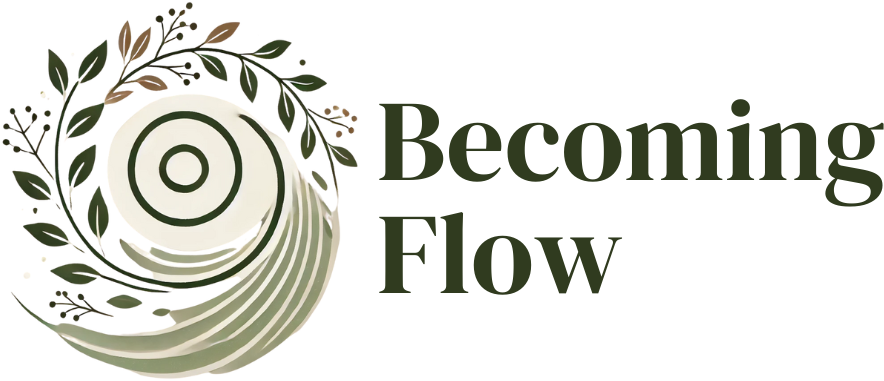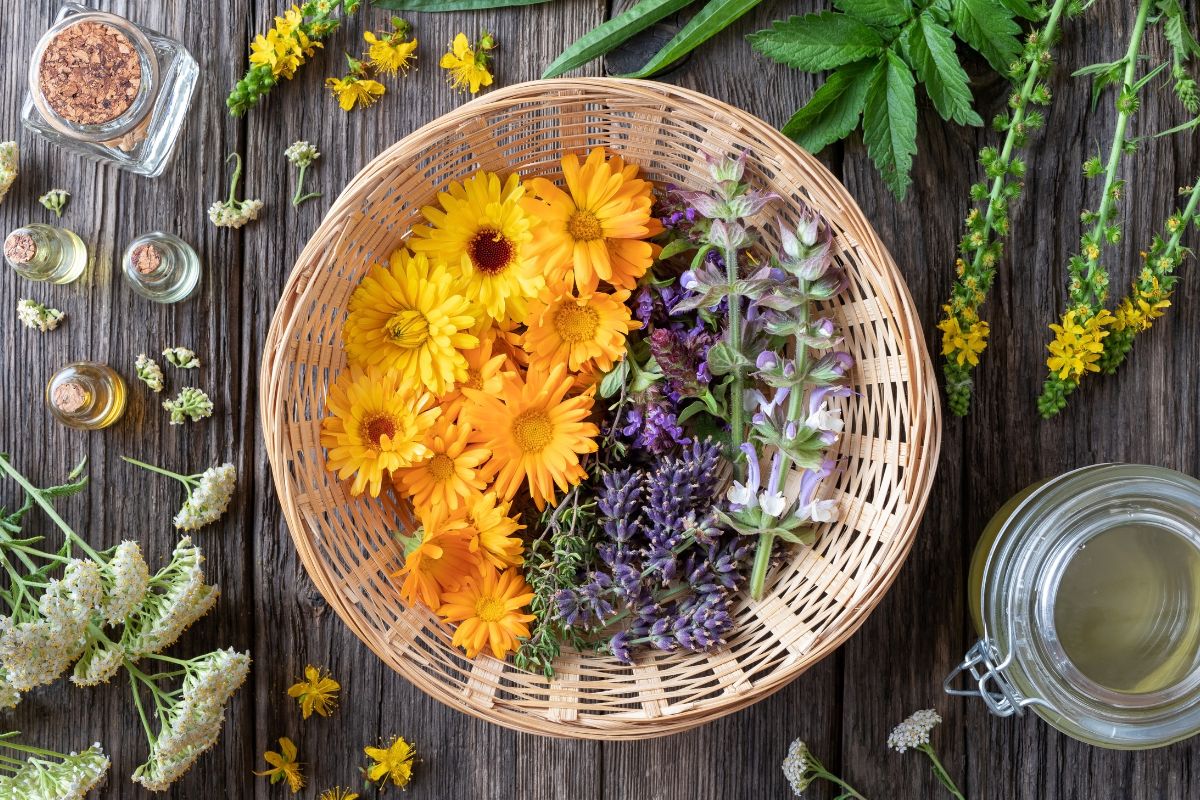Have you ever felt like the answer to many of life’s little discomforts might be right there in nature — maybe even growing in your backyard or sitting on your kitchen shelf? Well, it’s not just a feeling. Medicinal herbs have been part of folk wisdom for centuries. Since our grandmothers’ time, these plants have been used to ease pain, improve sleep, boost immunity, and calm the mind during stressful moments. And even with all the advances in modern medicine, the power of herbs continues to amaze — even showing up in recent scientific studies.
A lot of people still see herbal remedies as something “alternative” or optional, but the truth is, these plants can become strong allies in your daily self-care routine. And no, you don’t need to be an expert in herbalism to start using them. With clear information, a little curiosity, and conscious use, you can easily bring these natural ingredients into your life — whether in teas, meals, baths, or even a home garden. What’s more, reconnecting with nature through these herbs can help us reconnect with something deeper inside ourselves: our emotional and physical well-being.
In this article, I want to introduce you to the top 10 medicinal herbs you need to know. Some of them are household names — you might already be using them without even realizing it. Others may surprise you. But all of them share something in common: they’re accessible, versatile, and have the power to turn small daily habits into powerful tools for better health. So grab a cup of tea (maybe made with one of these herbs?) and come with me on this journey through the healing power of plants.
1. Chamomile – calm in flower form
We’ve all heard it: “Have a cup of chamomile tea to calm down.” This dainty flower may look delicate, but it packs serious healing potential. Rich in compounds like apigenin, chamomile has calming, anti-spasmodic, and anti-inflammatory properties. That means it doesn’t just help with sleep and anxiety — it’s also great for digestion, cramps, and tense muscles. Many people sip it before bed to wind down and get better rest. Bonus: its flavor is mild and pleasant, even for those who don’t usually enjoy herbal teas.
But chamomile isn’t just for tea. It can be used in compresses to soothe irritated eyes, in relaxing baths, or even as a gentle skin care treatment thanks to its healing properties. It’s also easy to grow at home with a bit of sunlight and care. Just a quick note: pregnant women should avoid overusing it and consult a healthcare professional. Overall, chamomile is like that friend who always shows up when you need a little peace and quiet — gentle, comforting, and always welcome.
2. Ginger – small, spicy, and powerful
Ginger is one of those roots that impress with its versatility. That spicy kick in your tea or smoothie? That’s ginger doing its thing. Loaded with gingerol — a compound with powerful anti-inflammatory and antioxidant effects — this root has been used for centuries in Eastern medicine to treat everything from digestive issues to muscle pain. It’s also great for boosting circulation, speeding up metabolism, and strengthening immunity. Oh, and it works wonders for nausea, whether you’re pregnant, carsick, or just feeling off.
Personally, I love making ginger tea with lemon and honey on chilly days — it warms you up and lifts your energy. You can also add it grated into juice, soups, or even take it in capsule form. Just a heads-up: too much can irritate the stomach or raise blood pressure in some people, so always use it mindfully. But overall, ginger is a little root that delivers big results.
3. Rosemary – sharp memory and fresh energy
Ah, rosemary. That smell instantly transports you to a sunny garden or reminds you of a comforting homemade meal. But rosemary is more than just a fragrant herb — it’s a brain booster. It helps improve circulation, which increases oxygen to the brain and sharpens focus and memory. Its essential oils also bring antioxidant, anti-inflammatory, and antimicrobial benefits. It’s like a natural pick-me-up for body and mind.
I often sip rosemary tea in the afternoon when I need a mental reset. It’s also amazing as a seasoning — for roasted veggies, soups, or even infused in oil. Want an energy cleanse? Try a rosemary bath. And if sore muscles are bugging you, rosemary-infused compresses can help. This herb is truly a multi-tasking superstar — and easy to grow in a pot near your kitchen.
4. Mint – fresh taste and digestive support
Mint is that energetic friend everyone loves. With its fresh aroma and bold flavor, it’s not just refreshing — it’s healing too. Rich in menthol, mint soothes the digestive tract, reduces gas and bloating, eases nausea, and even helps with headaches and bad breath. It’s perfect after meals or during stressful days.
I swear by a cup of mint tea after lunch — it makes everything feel lighter. You can also use mint in juices, desserts, or flavored water. It’s great for cooling down on hot days or calming tension. Plus, it’s one of the easiest herbs to grow at home. Just a small pot, a bit of sunlight, and it’ll thrive!
5. Lemon Balm – nature’s lullaby
Lemon balm (also called Melissa officinalis) is like a warm hug at the end of a long day. This gentle herb is known for its calming properties — helping with stress, anxiety, and even insomnia. It gently relaxes both the mind and body and is often used as a natural sleep aid without the grogginess that medications can bring.
But lemon balm isn’t just for bedtime. It also helps with digestive discomfort and menstrual cramps, thanks to its antispasmodic action. I remember drinking it before big exams when anxiety kicked in — it helped me breathe and focus. Its soft lemony taste makes it a favorite for nighttime tea. If you’re looking for a natural way to unwind, this herb is a gem.
6. Garlic – the immunity warrior
Garlic might not win any perfume contests, but when it comes to health, it’s a champion. Rich in allicin — a compound with strong antimicrobial action — garlic helps the body fight off infections and viruses. It also supports heart health, lowers bad cholesterol, and regulates blood pressure. Basically, it’s a kitchen staple with healing superpowers.
In my family, garlic tea with honey and lemon is a go-to remedy for colds. You can also mash it onto toast, blend it into sauces, or take supplements if you’re not into the strong flavor. Tip: let chopped garlic sit for 10 minutes before using — it boosts the allicin power! Garlic proves that sometimes, the simplest things are the most effective.
7. Turmeric – nature’s golden treasure
Turmeric, also known as golden root or curcuma, lives up to its nickname. This vibrant spice is loaded with curcumin — a powerful anti-inflammatory and antioxidant compound. It’s known to support joint health, protect the brain, aid digestion, and even play a role in preventing chronic illnesses like Alzheimer’s and cancer.
I love using turmeric in scrambled eggs, soups, or blending it into my morning smoothie. When mixed with black pepper and a healthy fat like olive oil, its absorption increases significantly. Just be mindful if you have gallbladder issues, and always start small. Turmeric is proof that something so colorful can be both delicious and deeply healing.
8. Aloe Vera – healing inside and out
Aloe vera is often known for its skincare benefits — and yes, it works wonders on burns, cuts, and dry skin. But its healing powers go way beyond the surface. Internally, the gel of this succulent plant supports digestion, reduces inflammation, and gently detoxifies the body. It’s also believed to strengthen immunity and promote cellular healing.
I’ve personally used aloe gel after sunburns, and the cooling effect is instant relief. If you want to consume it, be sure to remove the yellow part near the peel (it can be toxic) and only use the clear gel inside. Blend it into water or juice in small amounts. Growing aloe at home is easy — and it’s like having a little healing lab on your windowsill.
9. Nettle – the forgotten miracle
Nettle might scare people off with its sting, but once dried or cooked, it becomes a nutritional powerhouse. Rich in iron, magnesium, vitamin C, and antioxidants, nettle helps with anemia, fatigue, and joint pain. It also has diuretic and detoxifying effects, helping the body eliminate waste naturally.
I like using nettle in teas, and I’ve even swapped it for spinach in soup recipes. It has a mild flavor and tons of health benefits. It’s also great for hair growth and stronger nails when used as a rinse or tonic. Just be sure to handle it with gloves and respect its strength — nettle is the ultimate “don’t judge a book by its cover” herb.
10. Lemongrass – aroma, calm, and comfort
Lemongrass — also known as citronella or fever grass — is beloved for its citrusy scent and soothing vibe. It calms the nerves, helps with digestion, relieves cramps, and can ease muscle pain. It’s one of those herbs that feels like a breath of fresh air after a long day.
I often drink lemongrass tea before bed, or use dried stalks to scent my pillows. You can grow it at home with ease, and it even acts as a natural mosquito repellent. Lemongrass brings peace and balance — and sometimes, that’s exactly what we need.
🌱 How to Include These Herbs in Your Daily Life
Adding medicinal herbs to your routine is easier (and more enjoyable) than you might think. Start slow and pay attention to how your body responds. A calming tea before bed — like chamomile, lemon balm, or lemongrass — can be the perfect way to unwind. In the morning, try ginger and turmeric for an energizing, immune-boosting drink. Most of these herbs are affordable, easy to find, and many can be grown at home with just a little care.
Herbs can also shine in the kitchen. Garlic, rosemary, and mint are flavorful additions that bring health benefits to your meals. You can make infused waters, smoothies, and even homemade skincare using aloe vera or nettle. Baths and compresses with herbs like rosemary or chamomile add a therapeutic touch to your self-care. It’s a beautiful, intentional way to connect with nature while caring for your body.
Of course, it’s important to use herbs mindfully. Even natural remedies can interact with medications or not be suitable during pregnancy or for certain conditions. Do your research, listen to your body, and consult a healthcare provider if you’re unsure. When used with care and respect, herbs can become lifelong allies in your journey toward balance and well-being.
Want to dive deeper into the topic? Check out this super informative video from the Viva Bem channel that breaks down the benefits of medicinal herbs in everyday life in a simple and engaging way: Watch it here. Totally worth it!

Sam Bright is a passionate researcher of the power of medicinal plants and their benefits for health and well-being. With years of study and practice in the use of therapeutic herbs, he is dedicated to sharing accessible, evidence-based knowledge on how nature can support health holistically.
Through his blog, Sam explores everything from the traditional uses of plants to modern scientific discoveries, always with a practical and informative approach. His goal is to help people integrate herbal medicine into their daily lives in a safe and effective way.

